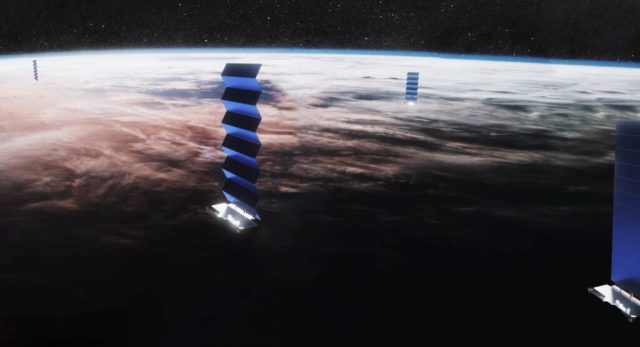Washington. July 17. INTERFAX - The Falcon 9 heavy launch vehicle successfully launched another batch of 53 mini-satellites into orbit on Sunday to replenish the orbital grouping of the global network of Internet coverage of the Starlink system, the developer company SpaceX reported.
"The launch of 53 Starlink satellites into orbit has been confirmed," the report says.
The launch was carried out at 10:20 on the time of the East Coast of the United States (at 17:20 Moscow time) from the 40th launch complex of the Kennedy Space Center at Cape Canaveral (Florida).
After about 15.5 minutes of launch, 53 satellites separated from the second stage of the rocket in an elliptical transition orbit up to 340 km high. After the SpaceX engineers have checked their operability, the satellites using their own ion engines will rise to a regular orbit with a height of about 540 km.
The reusable first stage of the American Falcon 9 launch vehicle, which was used for launches for the 13th time, about nine minutes after launch made a controlled vertical landing on a floating platform-the Just Read the Instructions drone, which was located in the Atlantic about 650 km from the cosmodrome.
In addition, a special SpaceX rescue vessel had to fish out of the water two wings of the fairing of the rocket head, which after separation would descend by parachute. The reuse of the fairing allows SpaceX to save up to $6 million when launching its rockets.
This is the 52nd launch of a group of Internet satellites into orbit since May 2019 as part of the Starlink project. Internet satellites weighing 290 kg each became part of the SpaceX orbital grouping.
SpaceX has already launched 2,858 Starlink Internet satellites. Some of them are out of order or out of orbit. About 2.5 thousand vehicles remain in orbit in working condition.
At the moment, the company is the largest satellite operator in the world. According to SpaceX, the Starlink Internet network is available to users in 32 countries around the world, including North America, Europe, the Far East and Australia. According to the American media, the Pentagon is also actively using the grouping of these satellites.

